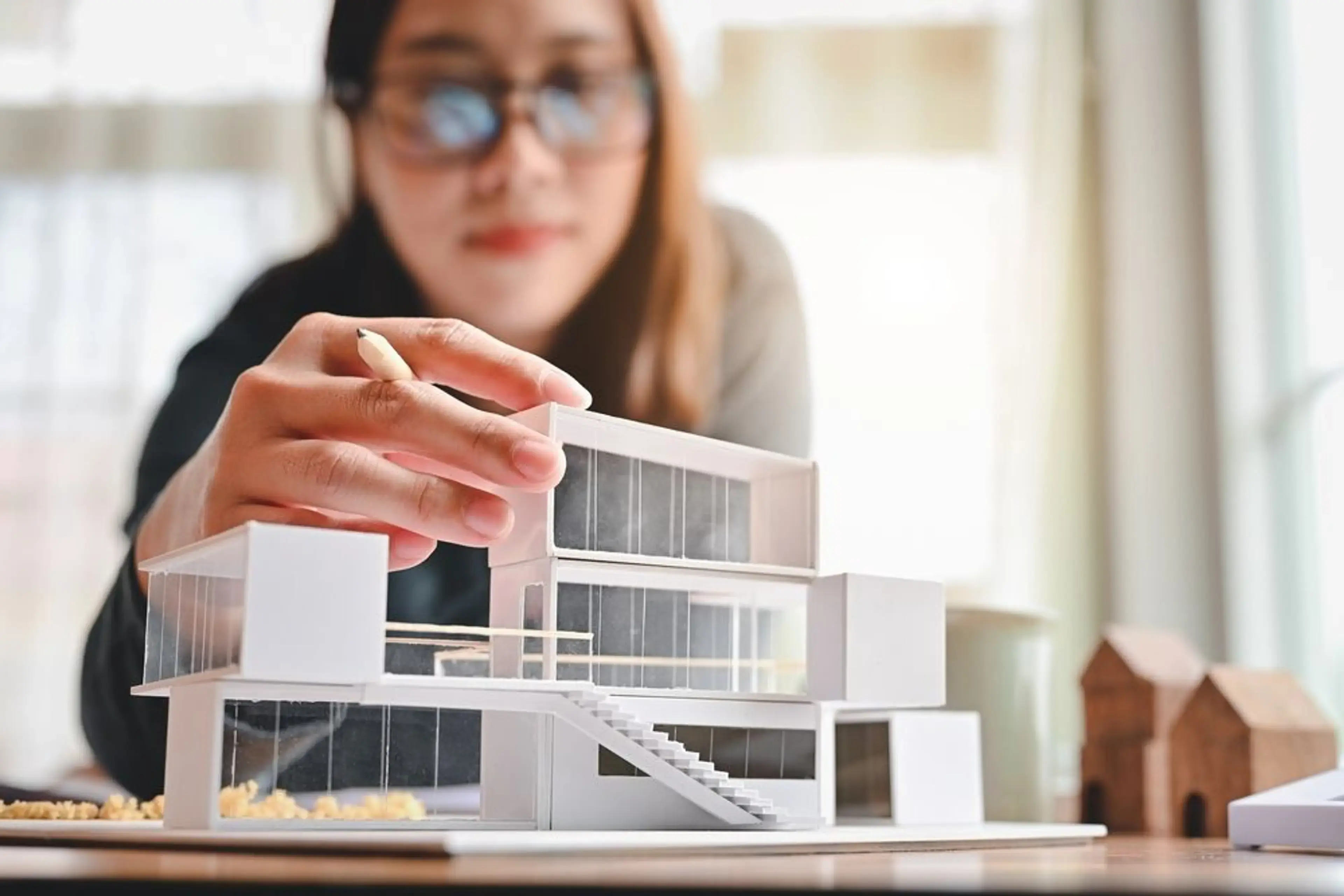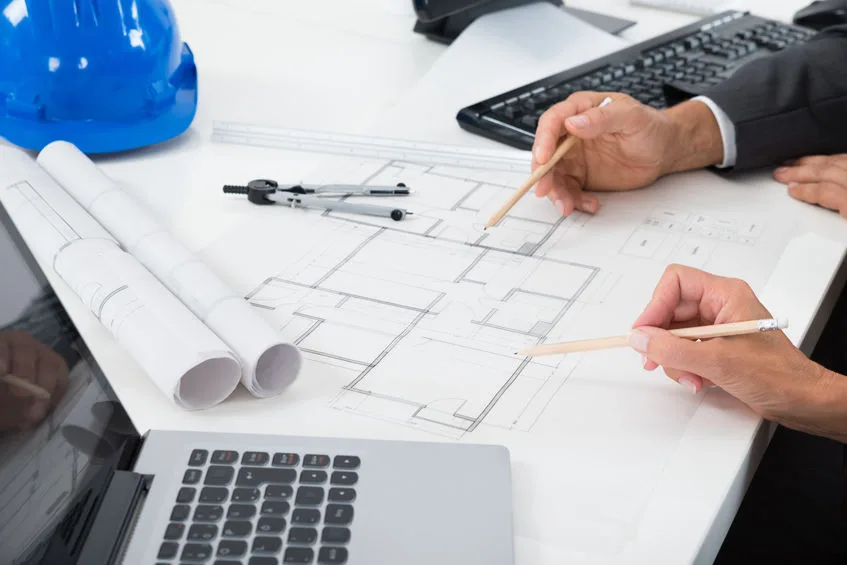Architect Portfolio Tips for Making an Impact in the Industry
Architect Portfolio Tips for Making an Impact in the Industry
Blog Article
Comprehending the Diverse Occupation Paths Available for Aspiring Architect
As an ambitious Architect, you have a globe of job paths waiting for you. Whether you're attracted to typical architecture or the subtleties of lasting design, there's a specific niche that straightens with your passions.
Conventional Architecture: Designing Structures and Frameworks
Standard style concentrates on developing structures and structures that blend performance with visual allure. As you explore this area, you'll appreciate the elaborate equilibrium in between kind and objective. You'll learn to draw motivation from historic styles, incorporating aspects like balance, products, and workmanship. Your layouts can show social heritage, showcasing neighborhood practices while meeting modern demands.
You'll develop abilities in composing, model-making, and website evaluation, permitting you to envision and connect your concepts successfully. Involving with customers, you'll need to understand their vision and convert it right into practical layouts.
Furthermore, constructing codes and sustainability techniques are crucial in your job, guaranteeing your structures are risk-free and environmentally friendly. As you grow in your career, you'll locate possibilities in property, industrial, and even repair tasks, each offering special challenges. Welcoming conventional design leads the way for a satisfying profession that admires the past while shaping the future.
Urban Preparation: Shaping Communities and Public Spaces
As an ambitious Architect, you can play an important role as a city planner, changing exactly how areas operate and connect. By using area interaction strategies, you'll ensure that residents have a voice in forming their atmosphere. Plus, integrating lasting style concepts will certainly assist develop spaces that not just meet today's requirements however additionally safeguard the future.
Duty of Urban Planners
While several could assume of engineers as the single enthusiasts behind structures, metropolitan coordinators play an essential duty in forming the more comprehensive landscape of areas and public rooms. By teaming up with numerous stakeholders, you'll aid design parks, transport systems, and household locations that advertise social communication and accessibility. Your competence in spatial style and community characteristics permits you to visualize future growth while maintaining social heritage.
Neighborhood Engagement Techniques
Reliable community involvement strategies are important for city organizers to guarantee that the voices of citizens are heard and valued in the planning process. To promote purposeful dialogue, you need to prioritize open forums and workshops where neighborhood participants can reveal their ideas and worries. By proactively paying attention and including feedback, you'll produce areas that show the neighborhood's demands, eventually leading to even more successful and lasting city environments.
Sustainable Design Principles
When making city rooms, including lasting layout concepts is important for producing atmospheres that prosper both ecologically and socially. You need to start by focusing on energy efficiency, making use of products that decrease waste and promote recycling. Consider integrating green rooms, like parks and yards, to boost biodiversity and boost air high quality. Promoting walkability and public transport can decrease dependence on cars and trucks, promoting a healthier neighborhood.
Creating with water conservation in mind is additionally essential-- think of rain yards and permeable surface areas to handle stormwater. Including area participants during the preparation procedure guarantees that the rooms you produce meet their demands and encourage social communication. By welcoming these principles, you'll add to dynamic, lasting metropolitan landscapes that profit everybody.

Landscape Architecture: Developing Lasting Exterior Atmospheres
As you explore landscape architecture, you'll uncover necessary style principles that create practical and stunning outdoor spaces. Lasting methods play an important duty in making sure these environments thrive while decreasing environmental impact. And also, you'll find a selection of job chances that permit you to make a genuine difference in exactly how individuals connect with nature.
Style Concepts in Landscape
Comprehending layout principles in landscape architecture is essential for developing sustainable outside environments that balance with nature. You'll need to consider elements like percentage, balance, and scale to guarantee your layouts feel cohesive and welcoming. Incorporating native plants not just enhances biodiversity yet also decreases water use, making your landscape resilient. Consider the flow of area and just how individuals communicate with it; paths and seating areas must welcome expedition and relaxation. In addition, take note of seasonal modifications, developing with materials that enhance the environments year-round (Architect). By focusing on sustainability and aesthetic appeals, you can develop exterior areas that enrich the community and promote health. Accepting these concepts will certainly establish a solid foundation for your career in landscape design.
Sustainable Practices Summary
Lasting techniques in landscape architecture not just focus on aesthetic appeals yet likewise focus on ecological health and source preservation. You can design areas that advertise dirt health, such as practicing and utilizing natural products permaculture concepts. Inevitably, these practices ensure your layouts profit both individuals and the setting for years to come.
Career Opportunities Exploration
With a strong structure in lasting techniques, landscape architecture provides a range of job courses that allow you to make a significant influence on the setting. You can work as a landscape designer, creating aesthetically pleasing and useful outdoor spaces, or focus on environmental remediation, aiding to revitalize damaged ecosystems. Urban organizers usually collaborate with landscape architects to create green rooms in urban setups, boosting city livability. If you're enthusiastic concerning education and learning, think about coming to be a landscape style teacher, inspiring future generations. Additionally, you might collaborate with nonprofits focused on ecological sustainability or take part in study to innovate new practices. Each path not only shapes gorgeous environments yet additionally promotes a much healthier world for future generations.
Sustainable Style: Focusing on Eco-Friendly Practices
As you discover your job in architecture, embracing eco-friendly techniques can establish you apart in a competitive area. Sustainable style concentrates on creating buildings that decrease ecological impact while boosting owner health. By integrating renewable products, energy-efficient systems, and lasting building methods, you'll contribute to a greener future.
Begin by acquiring expertise of green qualifications like LEED or BREEAM, which can reinforce your qualifications. Take into consideration how natural light, air flow, and thermal performance can enhance layout. Work together with designers and environmental consultants to innovate services that read more lower waste and save sources.
Don't neglect the importance of community participation-- appealing local stakeholders can inspire layouts that balance with the atmosphere. As clients increasingly prioritize sustainability, your competence in green techniques will not just bring in tasks yet likewise meet your passion for responsible architecture. Embrace this critical element of the occupation, and watch your job thrive.
Historical Conservation: Securing and Recovering Cultural Heritage
While you start on your building journey, think about the crucial role of historic conservation in maintaining our social heritage. This field concentrates on the security and repair of substantial structures, websites, and structures that inform the stories of our past. By participating in historical click here preservation, you'll aid protect the building legacy that shapes community identification.
As a historical preservation Architect, you'll assess historic relevance and evaluate the problem of frameworks. You'll work very closely with conservationists and historians to ensure authentic reconstruction techniques are used. This job path allows you to blend creative thinking with research study, allowing you to create solutions that respect original materials and craftsmanship.
Your work not only adds to sustainability by reusing existing buildings but likewise cultivates a sense of satisfaction within communities. Welcoming this path will aid you end up being a guardian of background, maintaining the tales and looks that improve our lives.
Interior Architecture: Enhancing Indoor Spaces
Historic preservation and indoor architecture both share a commitment to boosting the constructed environment, but they focus on various facets. While historical conservation highlights preserving a structure's cultural and historic worth, interior design absolutely nos in on optimizing indoor areas for functionality and looks.
As an aspiring Architect, you'll find that interior style enables you to blend creative thinking with technical skills. You'll make rooms that not just look excellent however also advertise convenience and effectiveness. This area includes recognizing just how light, shade, and products interact within a space, impacting state of mind and functionality.
You'll work on numerous projects, from residential homes to industrial workplaces, guaranteeing that each environment fulfills the demands of its passengers. By prioritizing individual experience, you can transform interiors into motivating and practical rooms, making a considerable influence on just how people communicate with their surroundings. Embrace the opportunity to boost interior settings and form the method individuals live and function.
Industrial Design: Merging Functionality With Aesthetics
Industrial design plays an important duty in developing products that effortlessly blend appearances with performance, ensuring that what you make use of daily is not just aesthetically enticing however likewise functional. As a hopeful Architect, you might involve yourself in this field, concentrating on designing every little thing from furnishings to consumer electronic devices. Your job involves comprehending user requirements, products, and producing procedures, enabling you to create ingenious solutions that enhance day-to-day experiences.
In commercial layout, you'll usually team up with designers, producers, and online marketers, ensuring that your styles are not just beautiful yet likewise possible. You'll learn to stabilize type and function, focusing on usability without compromising style. By sharpening your skills in mapping out, 3D modeling, and prototyping, you'll be well-appointed to bring your concepts to life. This occupation course supplies a dynamic atmosphere where imagination meets functionality, making it a gratifying option for designers thinking about shaping the products of tomorrow.
Frequently Asked Inquiries
What Educational Certifications Do I Need to Become an Architect?
To end up being an architect, you'll need a specialist degree in design, typically a Bachelor's or Master's. In addition, you'll need to finish an internship and pass the Architect Enrollment Assessment to practice lawfully.
Exist Qualification Needs for Different Architectural Profession Paths?
Yes, there're certification requirements for numerous architectural more info courses. Architect. You'll require to pass tests, complete teaching fellowships, and often go after specialized training, depending upon your chosen focus, like landscape design, urban layout, or historical conservation
What Software Application Abilities Are Vital for Engineers Today?

Exactly How Can I Gain Practical Experience While Researching Design?
You can obtain practical experience by interning at architectural firms, getting involved in style competitions, volunteering for community jobs, or teaming up with classmates on real-world assignments. These possibilities boost your skills and construct useful connections in the market.
What Task Opportunities Exist Outdoors Typical Architecture Firms?
You can explore numerous job possibilities outside typical style firms, like metropolitan preparation, indoor style, landscape style, construction monitoring, property growth, or perhaps roles in sustainability consulting. Each offers special challenges and rewards.
Whether you're drawn to traditional style or the nuances of lasting style, there's a specific niche that lines up with your interests.When designing urban areas, including sustainable style principles is vital for developing environments that prosper both ecologically and socially.As you explore landscape design, you'll find important design concepts that produce attractive and practical outdoor spaces.Understanding layout concepts in landscape design is necessary for producing sustainable outside atmospheres that balance with nature.In commercial style, you'll often team up with designers, marketing professionals, and suppliers, ensuring that your designs are not just beautiful yet likewise viable.
Report this page